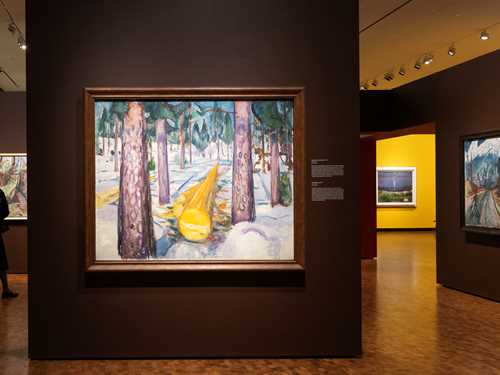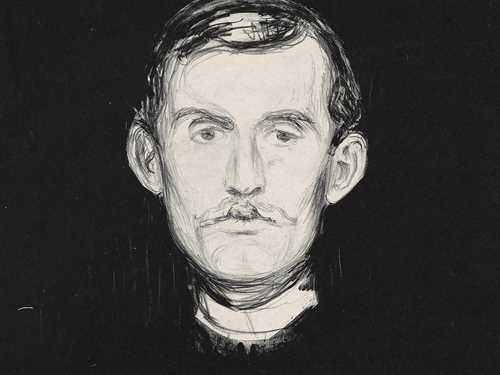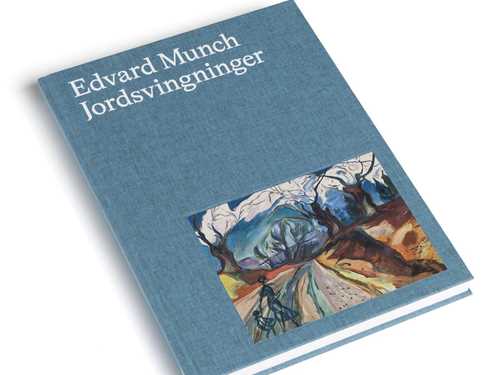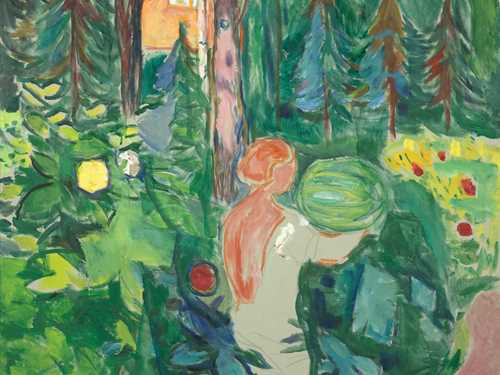Munch's Norway
Certain places where Edvard Munch lived or went on holiday crop up again and again in his art.
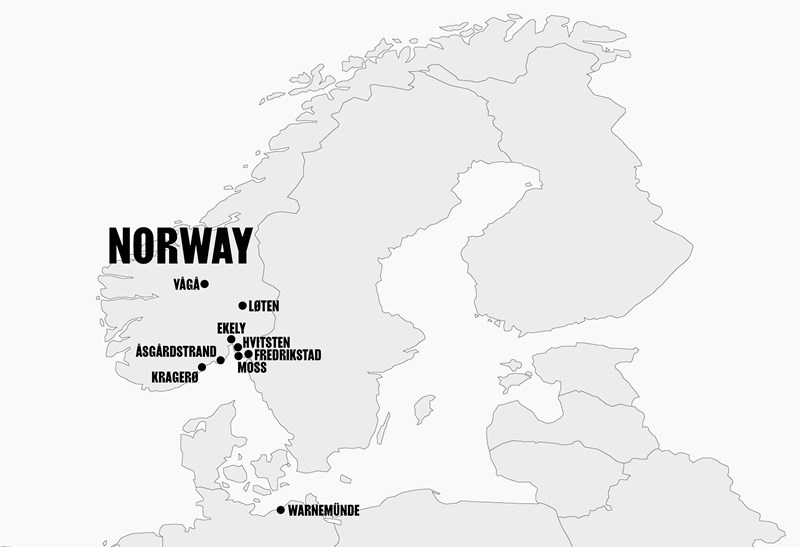
Edvard Munch gave each site unique visual reference points which we can recognise in different views of the same place. A particular lime tree near the bridge in Åsgårdstrand, the rocks and curves of the Hvitsten coast, and the broken-up texture of the sea at Warnemünde in northern Germany, are three examples.
Landmarks in Åsgårdstrand
The small seaside town of Åsgårdstrand inspired some of Edvard Munch's most famous images. Roughly an hour's drive outside Oslo, the town became a fashionable holiday resort for the Kristiania bourgeoisie at the turn of the century, including several artists. Trees and Garden Wall in Åsgårdstrand shows two of the town's landmarks: a wall with a white picket fence and a pair of tall lime trees that have grown together as one. They can both be seen in many of Munch's Åsgårdstrand motifs, including The Girls on the Bridge and Kiøsterudgården in Åsgårdstrand.
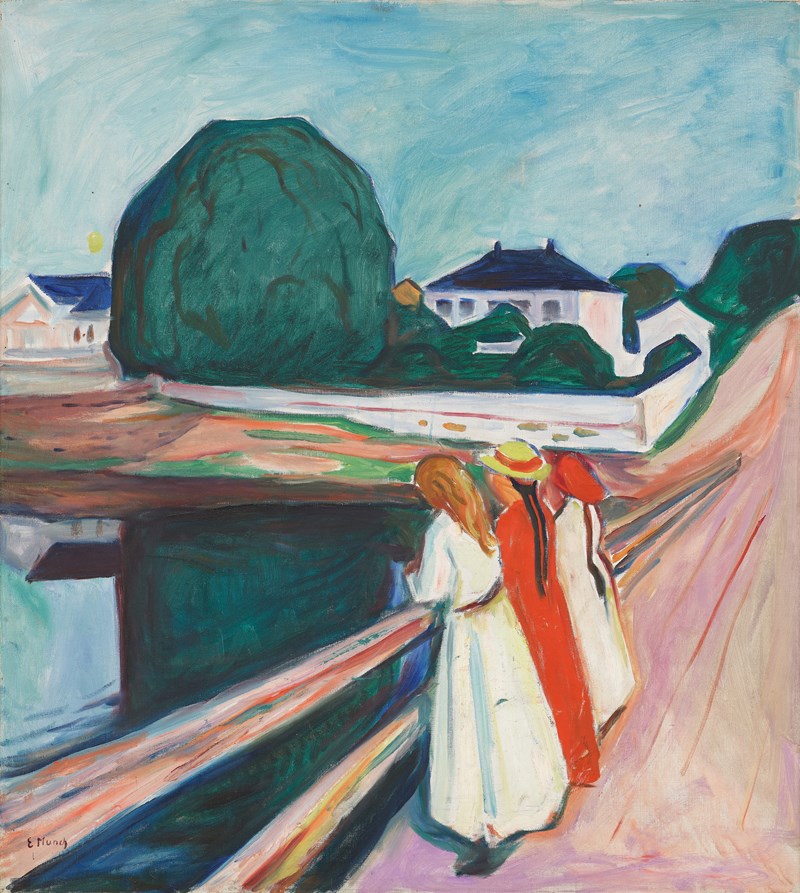
Edvard Munch, The Girls on the Bridge, 1927. Oil on canvas. Photo: Halvor Bjørngård
Bathing men in Warnemünde
In the course of an extended stay in Warnemünde, a seaside town on Germany's Baltic coast, Edvard Munch produced many artworks inspired by its invigorating combination of sun, sea and sand. To paint Bathing Men, he set up his easel on the town's nudist beach and stripped off his clothes. He conveys a strong sense of the men's physical presence. They are not held up as symbols or mythical figures but are shown as flesh and blood creatures enjoying the moment.
Coastal resorts such as Warnemünde were seen as attractive destinations for modern city dwellers in the early 1900s. Physicians recommended exposure to sunlight and saltwater as a benefit to both mental and physical health. This was reinforced by the rise of ‘vitalism’, a set of ideas centred on the belief that living things are driven by an inner energy. Munch took an interest in vitalistic theories, and many of his depictions of nature can be seen in this perspective.
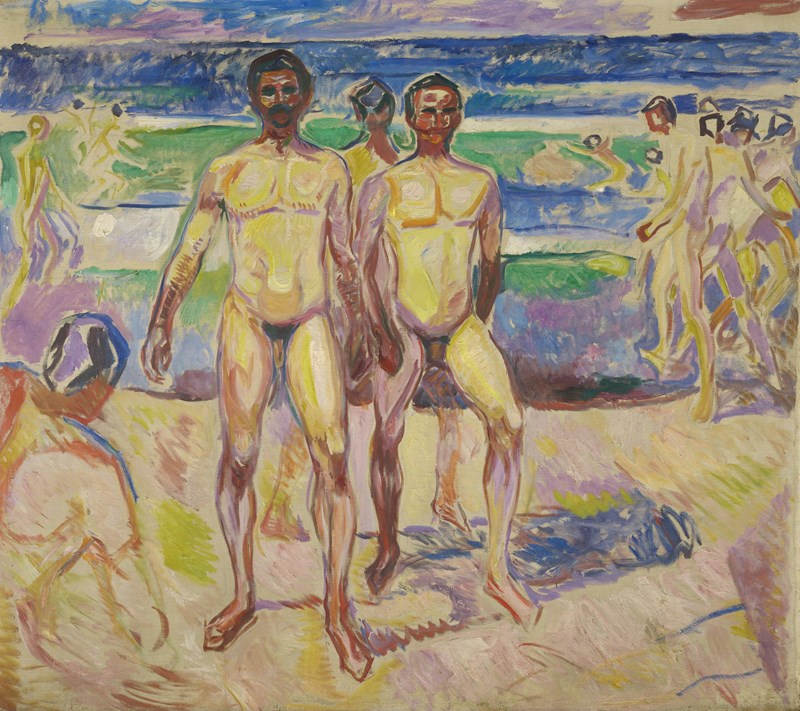
Edvard Munch, Bathing Men, 1913-1915. Oil on canvas. Photo: Halvor Bjørngård
Sunbathing motifs from Hvitsten
With its smooth, rounded rocks and peaceful atmosphere, the tiny hamlet of Hvitsten provides the perfect spot to lie back and enjoy the Norwegian summer. In 1910 Edvard Munch bought Nedre Ramme, a house nestled between woodland and the sea with its own beach. It was a place where he could escape and relax, like the woman in the Sunbathing motif. The Hvitsten coast, with its distinctive curves and rocks, became a frequent subject in his work.
Sunbathing had only recently become a leisure activity when Munch was making this motif. Tanned skin was previously associated with the working class, labouring outdoors. Only in the late 1800s was sunlight understood to be crucial for bodily health. Today we are more aware of the dangers of too much sun.

Edvard Munch, Sunbathing I and Sunbathing II, 1915. Woodcut printed in colour. Photo: Rena Li og Ove Kvavik.
In the exhibition Trembling Earth, you’ll get to know these locations and their unique visual reference points. Together, Munch’s paintings of the places he knew best are a reminder of the power of seeing with fresh eyes.
